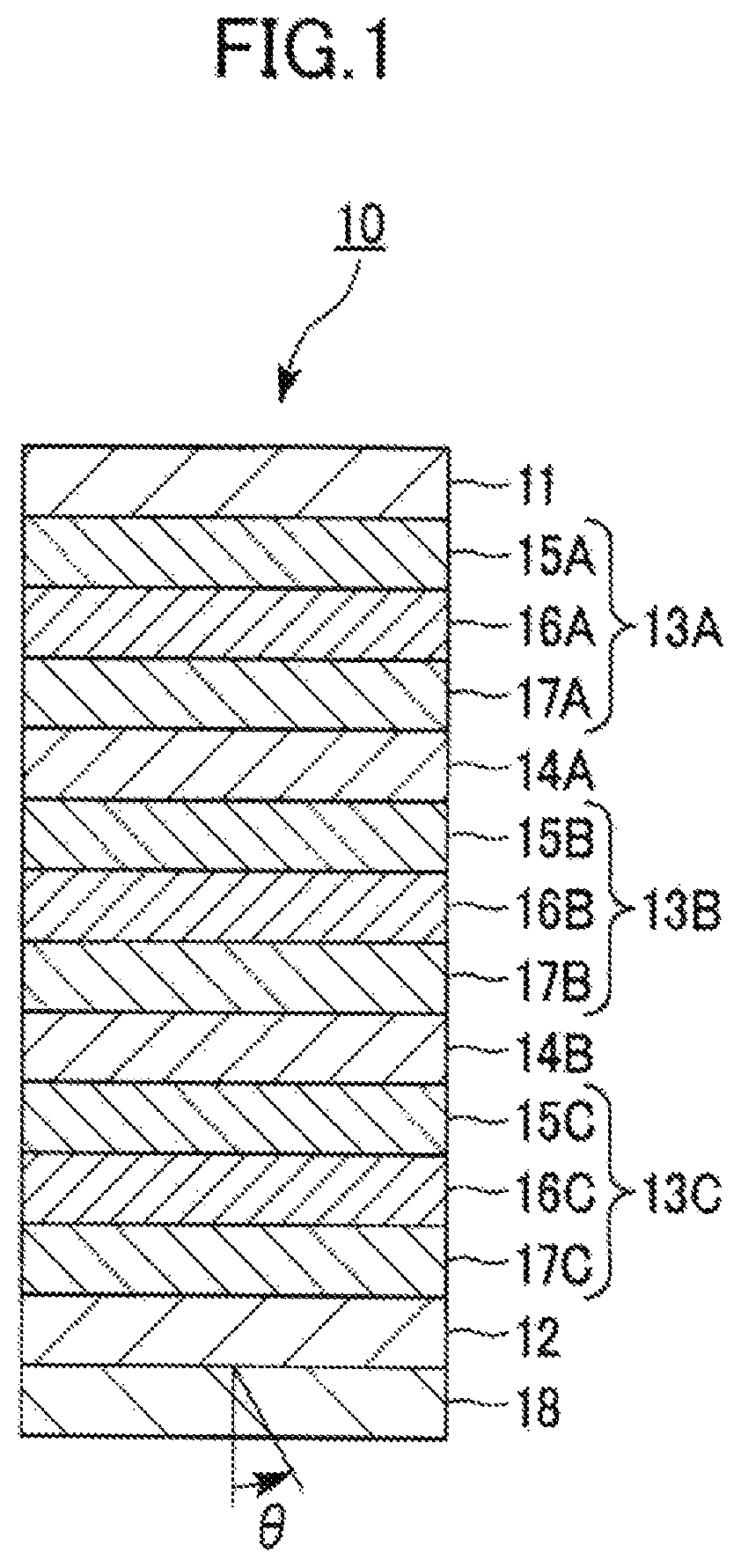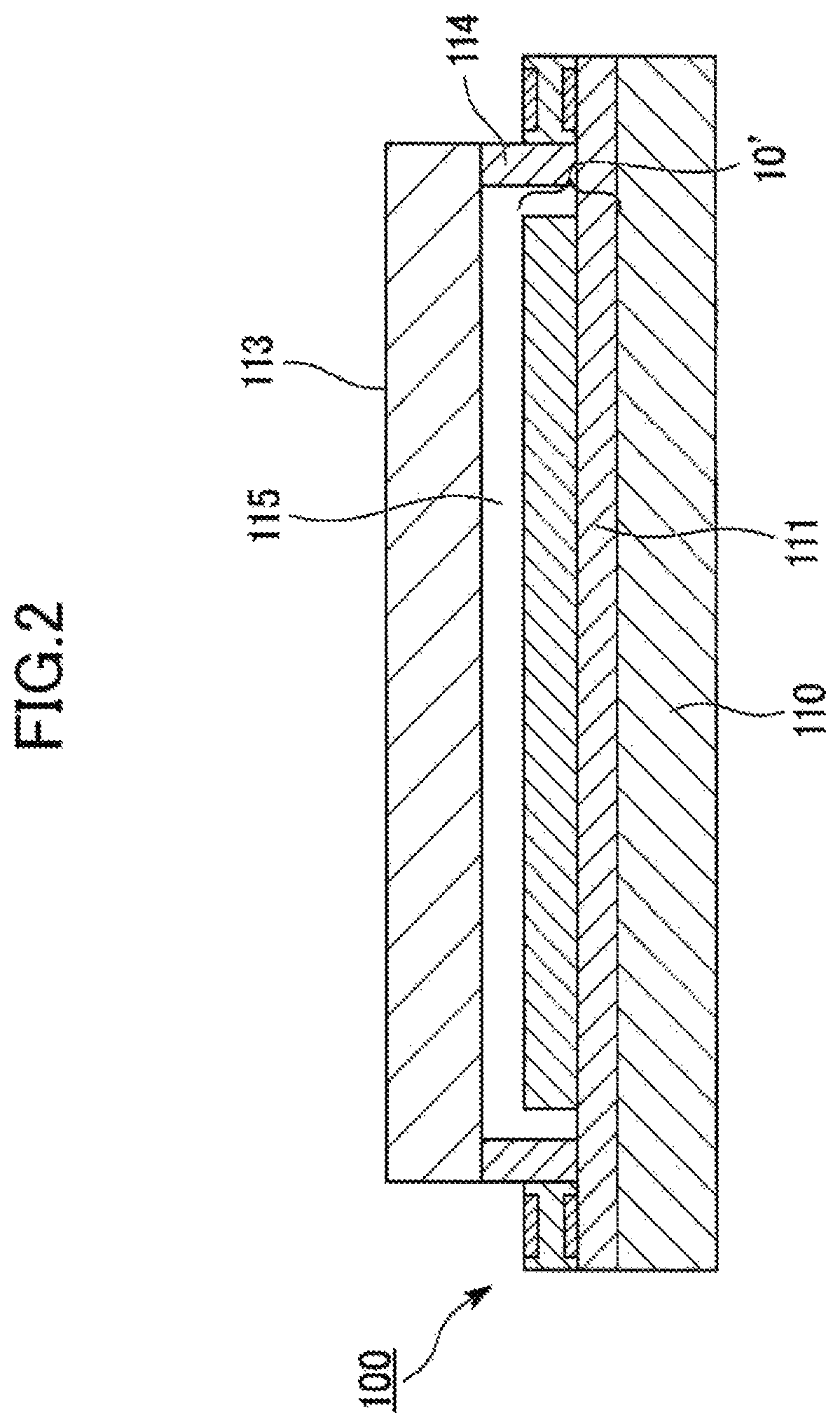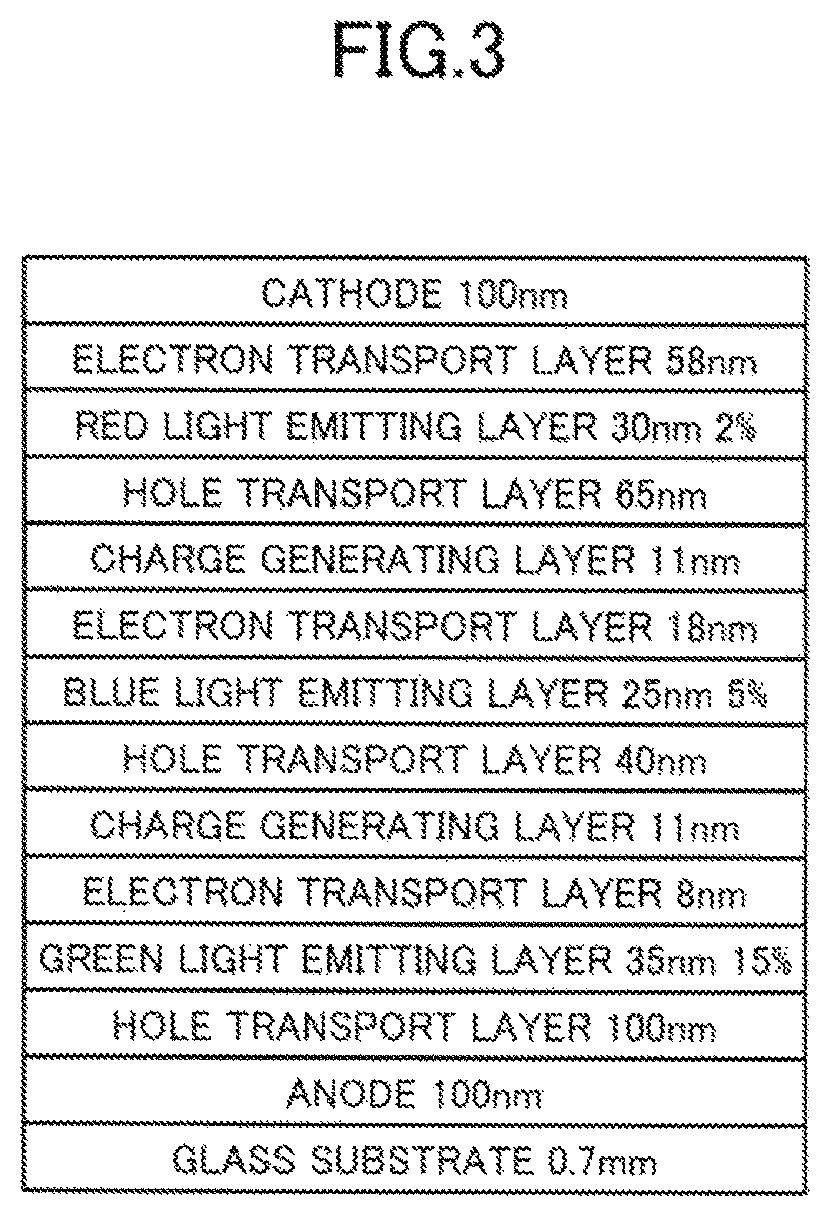Organic electroluminescent device and illumination device
an electroluminescent device and organic technology, applied in the direction of electric lighting sources, solid-state devices, light sources of electric light sources, etc., can solve the problems of inability to achieve difficult to individually control the optical characteristics of the respective layers, and difficulty in achieving suitable optical design for optimizing the distribution characteristics of light emitted from the element into the substrate. achieve the effect of high luminous efficiency
- Summary
- Abstract
- Description
- Claims
- Application Information
AI Technical Summary
Benefits of technology
Problems solved by technology
Method used
Image
Examples
first embodiment
“Organic Electroluminescent Device (Organic EL Device)”
[0056]FIG. 1 is a cross-sectional view illustrating a schematic configuration of an organic EL device according to a first embodiment of the present invention.
[0057]As illustrated in FIG. 1, the organic EL device 10 of the embodiment has a structure in which multiple light emitting units 13A, 13B, 13C each including a light emitting layer made of at least an organic compound are stacked one on top of another between a first electrode 11 and a second electrode 12 with each of charge generating layers (CGL) 14A, 14B sandwiched between the corresponding pair of the adjacent light emitting units 13A, 13B, 13C. The organic EL device 10 is an organic EL device capable of providing white light through a substrate 18 adjacent to the second electrode 12 by causing the multiple light emitting units 13A, 13B, 13C to emit light.
[0058]Note that the organic EL device 10 of the embodiment may be an organic EL device capable of providing white ...
second embodiment
“Lighting Device”
[0118]An embodiment of the lighting device in the present invention is described.
[0119]FIG. 2 is a cross-sectional view illustrating a configuration of one embodiment of the lighting device in the present invention. Although an example of the lighting device to which the present invention is applied is described herein, the lighting device of the present invention is not necessarily limited to such a configuration and various changes can be made as appropriate.
[0120]The lighting device 100 of the embodiment includes, for example, the organic EL device 10 in the aforementioned first embodiment as a light source. A base substrate 110 in the lighting device 100 of the embodiment corresponds to the substrate 18 in the organic EL element 10′ and anode terminal electrodes 111 in the lighting device 100 corresponds to the second electrode 12 in the organic EL device 10. The organic EL device 10 includes the organic EL element 10′ and the organic EL element 10′ is formed of...
example 1
“Manufacturing of Organic EL Device”
[0133]In Example 1, an organic EL device having a schematic structure illustrated in FIG. 3 was manufactured.
[0134]Specifically, first, there was prepared a soda-lime glass substrate with a thickness of 0.7 mm on which an ITO film with a thickness of 100 nm, a width of 2 mm, and a sheet resistance of about 20 Ω / □ was formed.
[0135]Then, the substrate was subjected to ultrasonic cleaning by using neutral detergent, ion-exchanged water, acetone, and isopropyl alcohol for 5 minutes for each cleaner and then subjected to spin drying and UV / O3 treatment.
[0136]Next, vapor deposition crucibles (made of tantalum or alumina) in a vacuum deposition apparatus were filled respectively with materials used to form layers illustrated in FIG. 3. Then, the substrate was set in the vacuum deposition apparatus, electric power was supplied to the vapor deposition crucibles to heat them in a reduced pressure atmosphere with a degree of vacuum of 1×10−4 Pa or less, and ...
PUM
| Property | Measurement | Unit |
|---|---|---|
| color rendering index | aaaaa | aaaaa |
| wavelength band | aaaaa | aaaaa |
| wavelength band | aaaaa | aaaaa |
Abstract
Description
Claims
Application Information
 Login to View More
Login to View More - R&D
- Intellectual Property
- Life Sciences
- Materials
- Tech Scout
- Unparalleled Data Quality
- Higher Quality Content
- 60% Fewer Hallucinations
Browse by: Latest US Patents, China's latest patents, Technical Efficacy Thesaurus, Application Domain, Technology Topic, Popular Technical Reports.
© 2025 PatSnap. All rights reserved.Legal|Privacy policy|Modern Slavery Act Transparency Statement|Sitemap|About US| Contact US: help@patsnap.com



